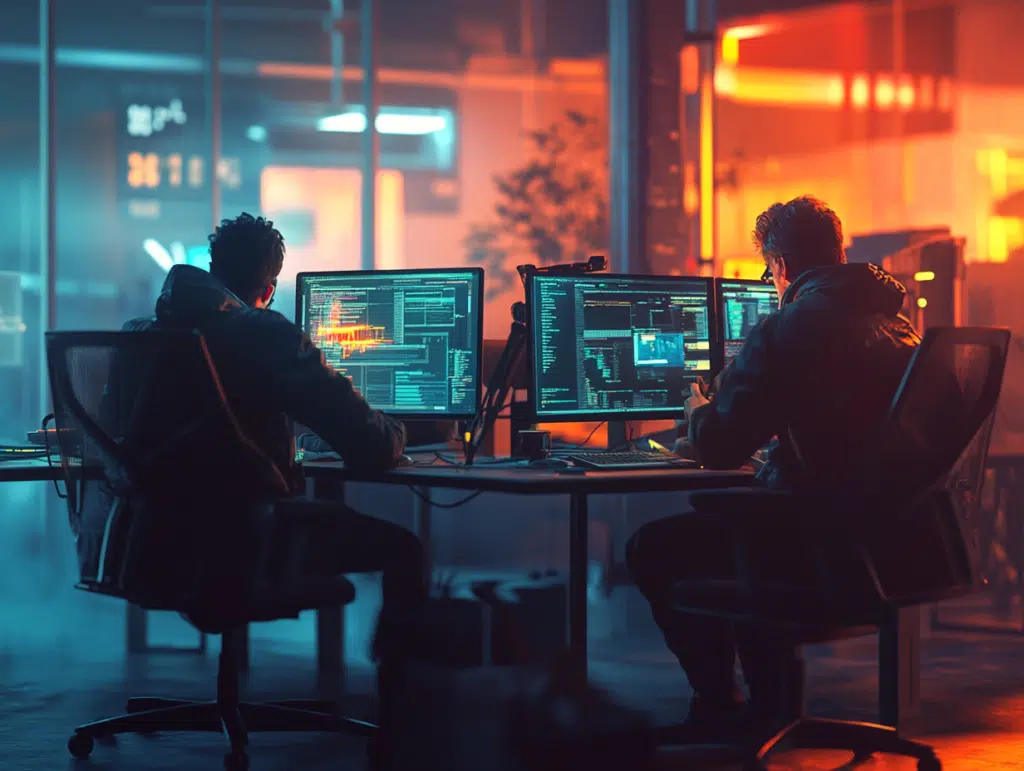Introduction
Digital storytelling has evolved dramatically over the past decade, transforming from simple multimedia presentations to immersive, interactive experiences that blend technology with human creativity. As we approach 2025, the landscape of digital storytelling is undergoing another revolutionary shift, influenced by advancements in artificial intelligence, extended reality, and changing consumer behaviors. In Morocco, as in the rest of the world, brands, creators, and educators are embracing these new storytelling techniques to engage audiences in unprecedented ways. This article explores the emerging trends and technologies that will define digital storytelling in 2025, offering insights for Moroccan content creators and marketers looking to stay ahead of the curve.
AI-Powered Narrative Generation
Collaborative Creation with AI
In 2025, artificial intelligence has become an indispensable partner in the storytelling process. Rather than replacing human creativity, AI enhances it by generating narrative frameworks, suggesting plot developments, and even creating personalized content variations based on audience preferences.
Moroccan content creators are increasingly using AI tools to overcome language barriers, creating stories that can be seamlessly translated and localized across Arabic, French, Amazigh, and other languages while preserving cultural nuances. This democratization of storytelling tools has led to a renaissance of Moroccan cultural narratives reaching global audiences.
Emotional Intelligence in Digital Stories
The next generation of AI-powered storytelling tools incorporates sophisticated emotional intelligence. These systems can analyze audience reactions in real-time and adjust narratives to maximize emotional impact.
For brands in Morocco’s competitive markets, this means creating advertising campaigns that dynamically adapt to consumer emotions, delivering stories that resonate on a deeply personal level with diverse audiences across the country’s various regions and cultural backgrounds.
Immersive Reality Storytelling
Beyond Virtual Reality: The Mixed Reality Narrative
While virtual reality offered escapism, 2025’s mixed reality storytelling blends digital elements with the physical world to create layered narrative experiences. Stories are no longer confined to screens but extend into the world around us.
In Morocco’s tourism sector, historical sites like Volubilis or the medinas of Fez and Marrakech have been transformed through mixed reality. Visitors experience stories that unfold as they walk through these locations, with digital overlays revealing historical events, characters, and hidden narratives invisible to the naked eye.
Sensory Expansion of Storytelling
Digital storytelling in 2025 engages more than just sight and sound. Haptic technology, olfactory devices, and environmental controls create fully sensory narrative experiences.
Moroccan culinary storytelling has particularly benefited from this trend, with digital content about traditional dishes like tagine or pastilla now accompanied by complementary scents and simulated textures, allowing international audiences to experience the sensory richness of Moroccan gastronomy.
Participatory Narratives and Collective Storytelling
User-Generated Plot Development
The line between creator and consumer has blurred significantly by 2025. Interactive storytelling platforms now allow audiences to influence narrative direction in real-time, creating branching storylines that reflect collective preferences.
This trend has revitalized interest in Morocco’s rich tradition of oral storytelling. Digital platforms now allow the collaborative creation of modern tales inspired by traditional Moroccan folklore, with contributors from across the country adding elements that reflect regional variations and perspectives.
Community-Driven Story Worlds
The most successful digital stories in 2025 aren’t isolated experiences but expansive story worlds that communities can inhabit and expand. These persistent narrative universes evolve through continuous contribution and interaction.
Several Moroccan creative studios have pioneered this approach by developing digital story worlds based on the country’s diverse heritage, from Amazigh mythology to the cosmopolitan history of cities like Tangier and Casablanca. These platforms have become cultural touchpoints and are increasingly used in education to engage younger generations with their heritage.
Data-Informed Storytelling
Predictive Narrative Analytics
By 2025, sophisticated analytics allow storytellers to predict audience reactions with remarkable accuracy. These tools help creators optimize narratives for maximum engagement while still maintaining artistic integrity.
For Morocco’s growing film and content production industry, these analytics have proven invaluable in creating stories that resonate both locally and internationally, helping Moroccan creators find the perfect balance between authentic cultural expression and global appeal.
Personalized Story Pathways
The one-size-fits-all approach to storytelling has become obsolete. In 2025, digital stories adapt to individual preferences, creating uniquely personalized experiences for each user based on their behavior, preferences, and emotional responses.
Moroccan educational institutions have been early adopters of this technology, creating adaptive learning narratives that adjust to students’ learning styles and cultural backgrounds, dramatically improving educational outcomes across diverse student populations.
Conclusion
As we navigate the digital storytelling landscape of 2025, the opportunities for Moroccan creators, brands, and institutions are boundless. The convergence of AI, immersive technologies, and community participation has created a dynamic storytelling ecosystem that honors traditional narrative forms while embracing technological innovation. By understanding and applying these emerging trends, Morocco’s digital storytellers can create compelling experiences that resonate not just locally but on the global stage, sharing the country’s rich cultural heritage and contemporary vision with the world.


